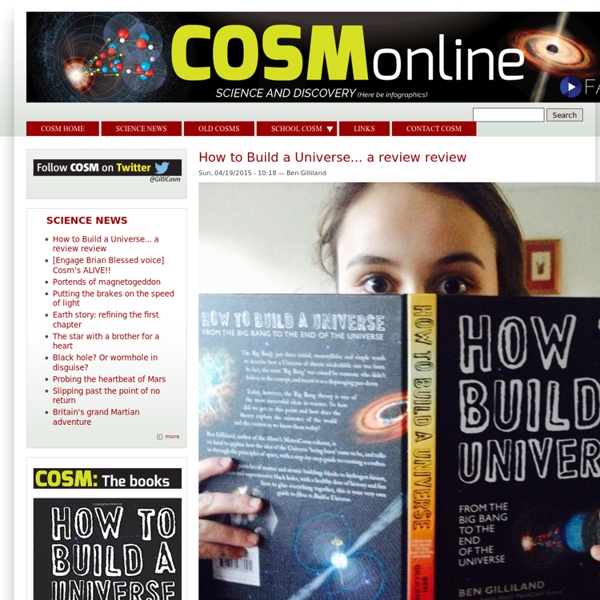



iPhone Powered By Viruses? Berkeley Scientists Move Closer Image credit: Berkeley Lab Viruses might eventually be able to power the very phone, computer or tablet you're reading this article on. And we're not talking about those digital viruses or infestations - trojans, worms, and whatnot. Scientists at the U.S. Department of Energy's Berkeley Lab have found a way to generate power using human viruses. "In near future, we believe that we can develop personal electric generators. So how does it all work? And that force is critical to the equation. But the scientists are picturing even broader uses. However, this is still a ways out. "We are currently working on enhancing the power output of the virus-based piezoelectric generators," Lee told us. EnvironmentNature & EnvironmentBerkeley Lab
Transition Culture Cost of Solar Energy Plummets - Renewable Energy If you’re thinking about switching to solar energy, now’s the time. Prices have never been lower, and in some areas, PV systems can now produce electricity at a cost that’s competitive with — or even lower than — conventional electricity from coal, nuclear or natural gas. That’s right — the day we’ve all been waiting for has finally arrived. The cost of solar energy rivals electricity produced by much less environmentally friendly sources. What’s more, the cost of solar power will continue to fall while the price of conventional fuels spirals upward. The cost of a residential solar power system has dropped about 40 percent in just the last two years. Families in many major cities are paying 10 to 12 cents per kwh for conventional power, and soon, many in the Midwest will pay up to 15 cents/kwh for conventional power. Rebates that are available from some utilities lower the price even more. Businesses throughout the country receive even more financial incentives.
SEI Solar Professionals Certificate Program The SEI Solar Professionals Certificate Program goes beyond a "certification test prep" format of training and takes participants to a higher level of educational experience to truly prepare them for the solar industry and a career. THE SEI SOLAR PROFESSIONALS CERTIFICATE PROGRAM IS THE MOST RIGOROUS TRAINING SEI OFFERS. SUCCESSFULLY FINISHING THE ENTIRE PROGRAM OF STUDY REQUIRES COMPLETING MULTIPLE COURSES. For more information, e-mail Solar Energy International's Certificate Program Advisors, Breccia Wilson - breccia@solarenergy.org, or Kathy Fontaine - kathy@solarenergy.org (please email ONE not both). To speak to an advisor, call the Student Services department at (970) 963-8855, ext. 107 for Breccia or ext. 102 for Kathy SEI Solar Professionals Certificate Options * In-person destination International training can be used in lieu of RD101, but a tuition difference may apply. SEI Solar Professional Certificate Program Benefits Why Create a Professional Training Certificate Program?
My Yahoo! Nous, Yahoo, faisons partie de la famille de marques Famille de marques Yahoo Les sites et applications que nous possédons et exploitons, y compris Yahoo et AOL, et nos services publicitaires numériques, Yahoo Advertising.Yahoo. Lorsque vous utilisez nos sites et nos applications, nous utilisons des Témoins Les témoins (y compris des technologies similaires telles que le stockage Web) permettent aux opérateurs de sites Web et d'applications de stocker et de lire des informations provenant de votre appareil. vous fournir nos sites et applications; authentifier les utilisateurs, appliquer des mesures de sécurité et prévenir les pourriels et les abus; et mesurer votre utilisation de nos sites et applications Si vous cliquez sur 'Tout accepter', nos partenaires et nous utiliserons également des témoins et vos données personnelles (telles que votre adresse IP, votre emplacement précis et vos données de navigation et de recherche) dans le but de :
When LSD Was Legal (And Cary Grant Was Tripping) Forget 420. In honor of the latest lysergic episode of MAD MEN, a look back at the time before LSD was outlawed. In the latest episode of Mad Men Roger Sterling, the silver-haired drunkard rascal of SCDP, attends a high society LSD party. LSD was first synthesized in 1938 by Dr. Everybody knows that the CIA seized on acid as a possible mind control drug, using it in their MKULTRA experiments. But acid wasn't just being used for sinister purposes. Grant swore by the drug. Clare Booth Luce was such a major fan of acid that she got Henry to drop it (she later said it saved their marriage), and he liked it so much he had Life publish a number of laudatory articles about the drug through the 50s and 60s. But of course the strange thing about acid is that it was anything BUT counterculture... until Timothy Leary came along. Even with the Luces as advocates, there was a backlash to LSD. Acid never got a fair shake therapeutically. * some of the experiments were pretty wild.
Petra: Lost City of Stone Deep within the deserts of Jordan lies the ancient city of Petra. Through a narrow gorge it emerges into view, revealing awe-inspiring monuments cut into the surrounding cliffs. What is this astonishing city? Two thousand years ago, Petra stood at a crossroads of the ancient Near East. The Nabataeans also erected monumental tombs, memorializing their kings and leaders. Today archaeologists are discovering clues to Petra's past. In New York, Petra: Lost City of Stone was made possible by Banc of America Securities and Con Edison.
The World before 1000 BCE 2012 March 12 - The Scale of the Universe Interactive Discover the cosmos! Each day a different image or photograph of our fascinating universe is featured, along with a brief explanation written by a professional astronomer. 2012 March 12 The Scale of the Universe - Interactive Flash Animation Credit & Copyright: Cary & Michael Huang Explanation: What does the universe look like on small scales? Tomorrow's picture: dust before galaxies Authors & editors: Robert Nemiroff (MTU) & Jerry Bonnell (UMCP)NASA Official: Phillip Newman Specific rights apply.NASA Web Privacy Policy and Important NoticesA service of:ASD at NASA / GSFC& Michigan Tech.